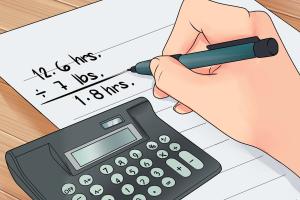Essential Guide to Measuring Remaining Propane in Your Tank

-
Quick Links:
- Introduction
- Understanding Propane
- Importance of Measuring Propane
- Methods of Measuring Remaining Propane
- Step-by-Step Guide to Measuring Propane
- Tools Needed for Measurement
- Case Studies and Real-World Examples
- Expert Insights and Tips
- FAQs
- Conclusion
Introduction
Propane is a versatile fuel source that powers everything from home heating to BBQ grills. However, knowing how much propane is remaining in your tank is crucial for safe and efficient usage. This guide will provide you with everything you need to measure your propane levels accurately, ensuring you never run out unexpectedly.
Understanding Propane
Propane is a type of liquefied petroleum gas (LPG) that is commonly used in residential and commercial settings. It is stored in liquid form under pressure and vaporizes when released into the atmosphere. Understanding how propane works and its properties is essential for effective measurement.
Importance of Measuring Propane
Measuring the remaining propane in your tank is vital for several reasons:
- Ensures you have enough fuel for your needs.
- Prevents unexpected outages and disruptions.
- Aids in safety by avoiding overfilled tanks or running out of fuel.
- Helps in budgeting for fuel purchases.
Methods of Measuring Remaining Propane
There are several methods to measure the remaining propane in your tank:
1. Propane Gauge
Most propane tanks come with a built-in gauge that indicates the level of propane. These gauges can be analog or digital.
2. Weighing the Tank
Another method is to weigh the tank. Empty propane tanks have a specific tare weight (TW) marked on them. By weighing the tank, you can calculate the amount of propane left.
3. Hot Water Method
This method involves pouring hot water down the side of the tank and feeling for a temperature difference. The area that feels cooler indicates the level of propane.
Step-by-Step Guide to Measuring Propane
Using a Propane Gauge
- Locate the gauge on your tank.
- Check the reading; it will typically show a percentage or level.
- Note if the gauge is in good working condition.
Weighing Your Propane Tank
- Use a scale to weigh the full tank.
- Subtract the tare weight (found on the tank).
- Divide the result by the weight of propane per gallon (4.24 lbs/gallon).
Hot Water Method Steps
- Boil water and pour it down the side of the tank.
- Run your hand down the side of the tank.
- Feel for a temperature change to determine the propane level.
Tools Needed for Measurement
- Scale (for weighing)
- Hot water
- Propane gauge (if not built-in)
- Thermometer (optional for accuracy)
Case Studies and Real-World Examples
Many homeowners have faced challenges with propane measurement. For instance, a family who relied solely on the gauge found themselves out of fuel during a winter storm. By using multiple measurement methods, they ensured they would never face such an issue again.
Expert Insights and Tips
Experts recommend regular checks of your propane tank levels, especially before peak usage seasons. Utilizing both gauge readings and weighing can provide a more accurate understanding of your propane levels.
FAQs
1. How can I tell if my propane gauge is broken?
If the gauge does not move or shows unusual readings, it may be broken.
2. What is the average lifespan of a propane tank?
Propane tanks can last for several years, but regular inspections are essential for safety.
3. Can I refill any propane tank?
Only refill tanks that are certified for refilling and meet safety standards.
4. What should I do if my propane runs out?
Contact a propane supplier immediately to refill the tank.
5. Is it safe to use a propane tank indoors?
No, propane tanks should be used outdoors unless they are designed for indoor use.
6. How can I improve the accuracy of my measurements?
Using multiple methods such as weighing and gauging provides better accuracy.
7. What is the best time to check my propane levels?
Check levels before the heating season and during peak usage times.
8. What are the signs of a leaking propane tank?
Signs include a hissing sound, strong smell of gas, or dead vegetation around the tank.
9. How often should I check my propane levels?
It’s advisable to check at least once a month, especially during heavy usage seasons.
10. Can I measure propane levels in a vertical tank?
Yes, the same methods apply, though special attention may be needed for gauge readings.
Conclusion
Measuring the remaining propane in your tank is a fundamental skill for any propane user. By understanding various methods and employing them regularly, you can ensure that you always have enough fuel for your needs while prioritizing safety and efficiency.
For further reading and resources, visit:
Random Reads